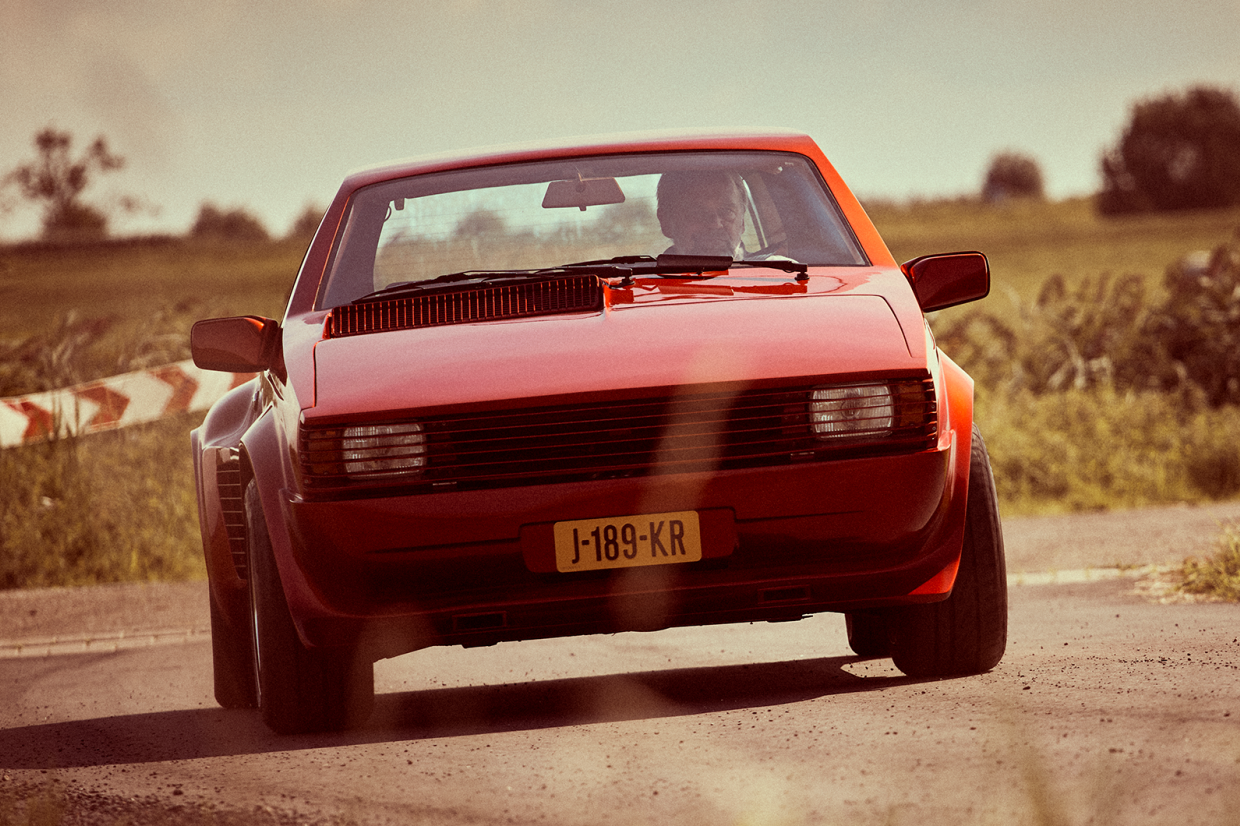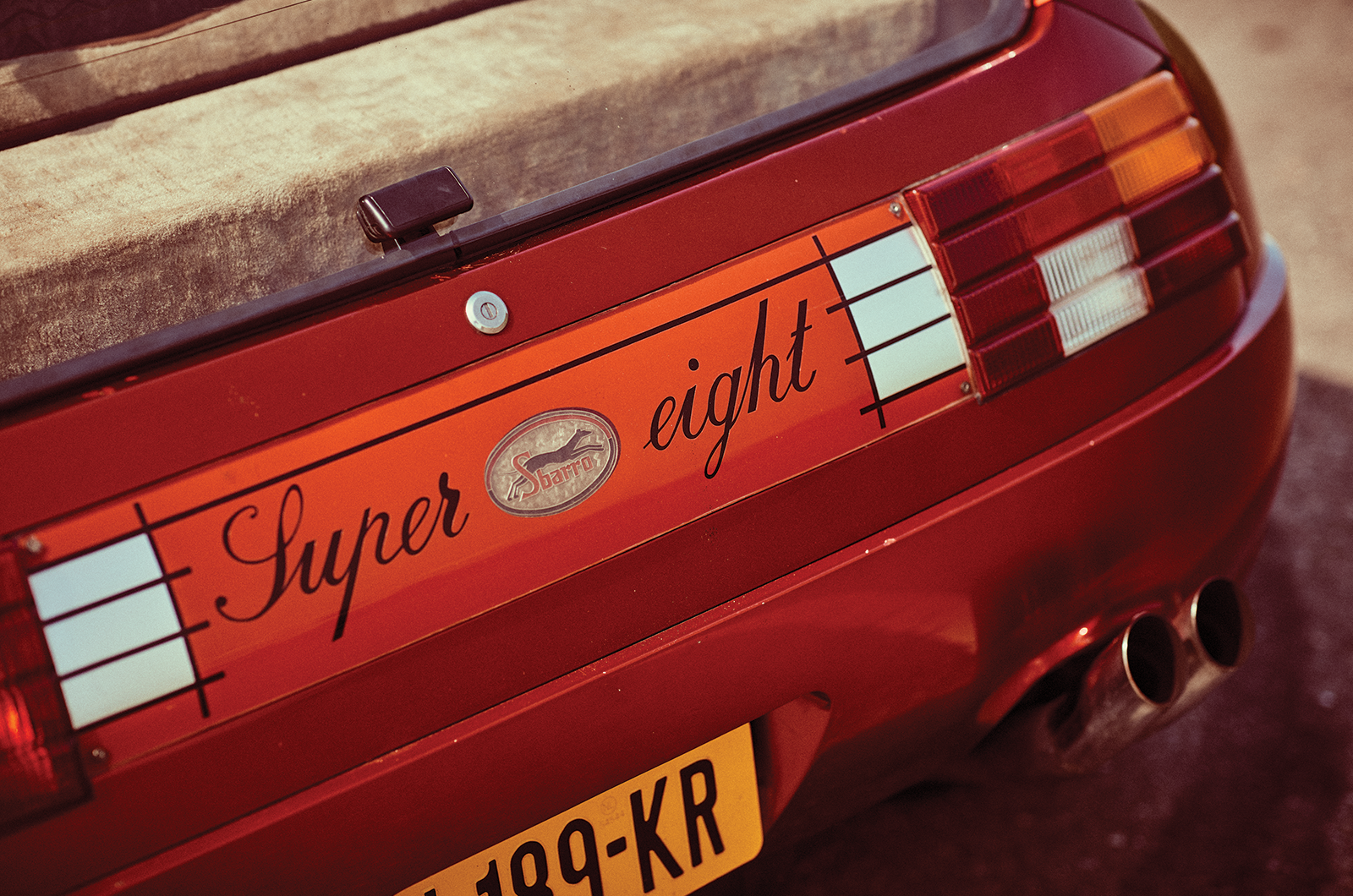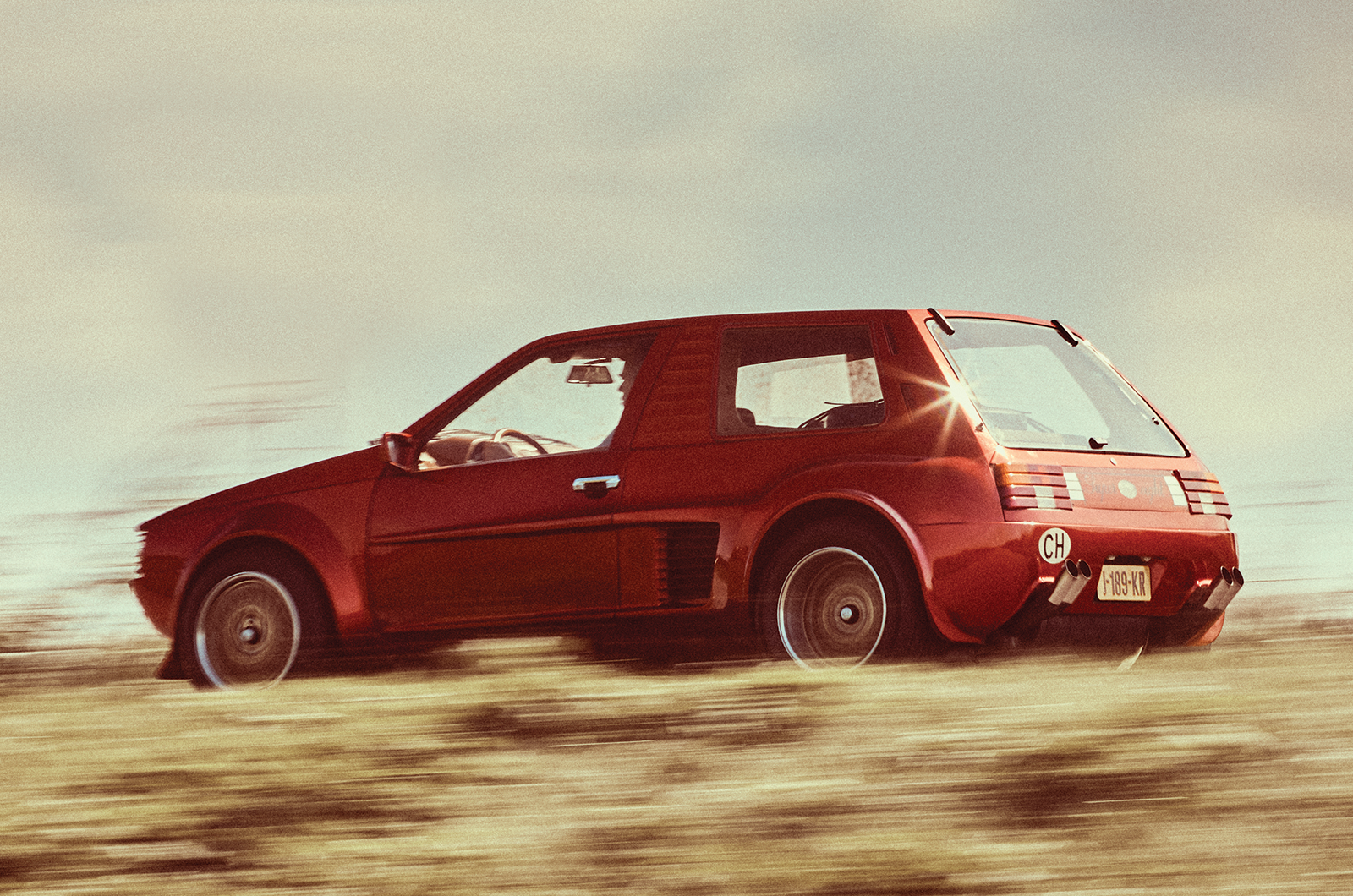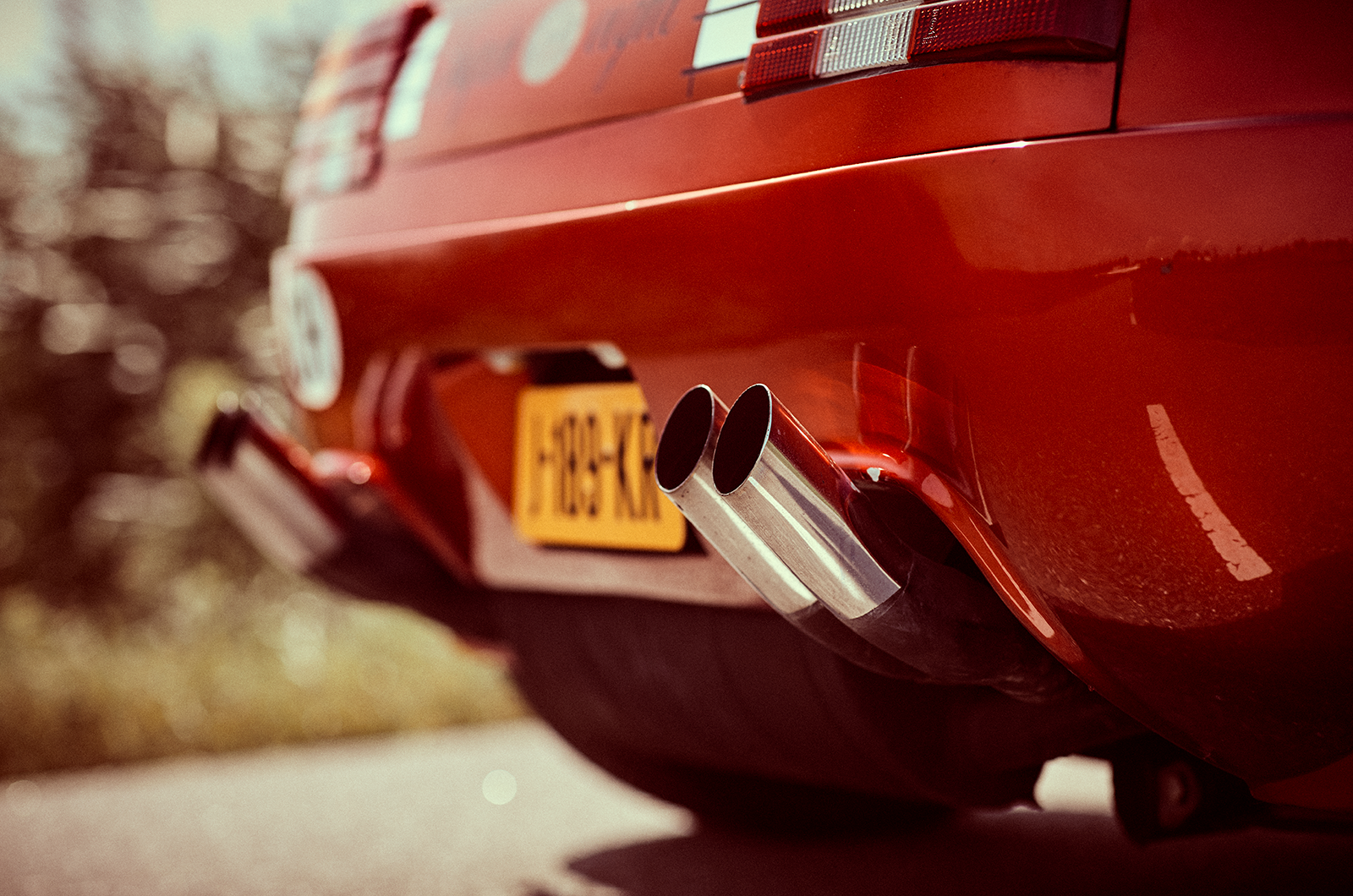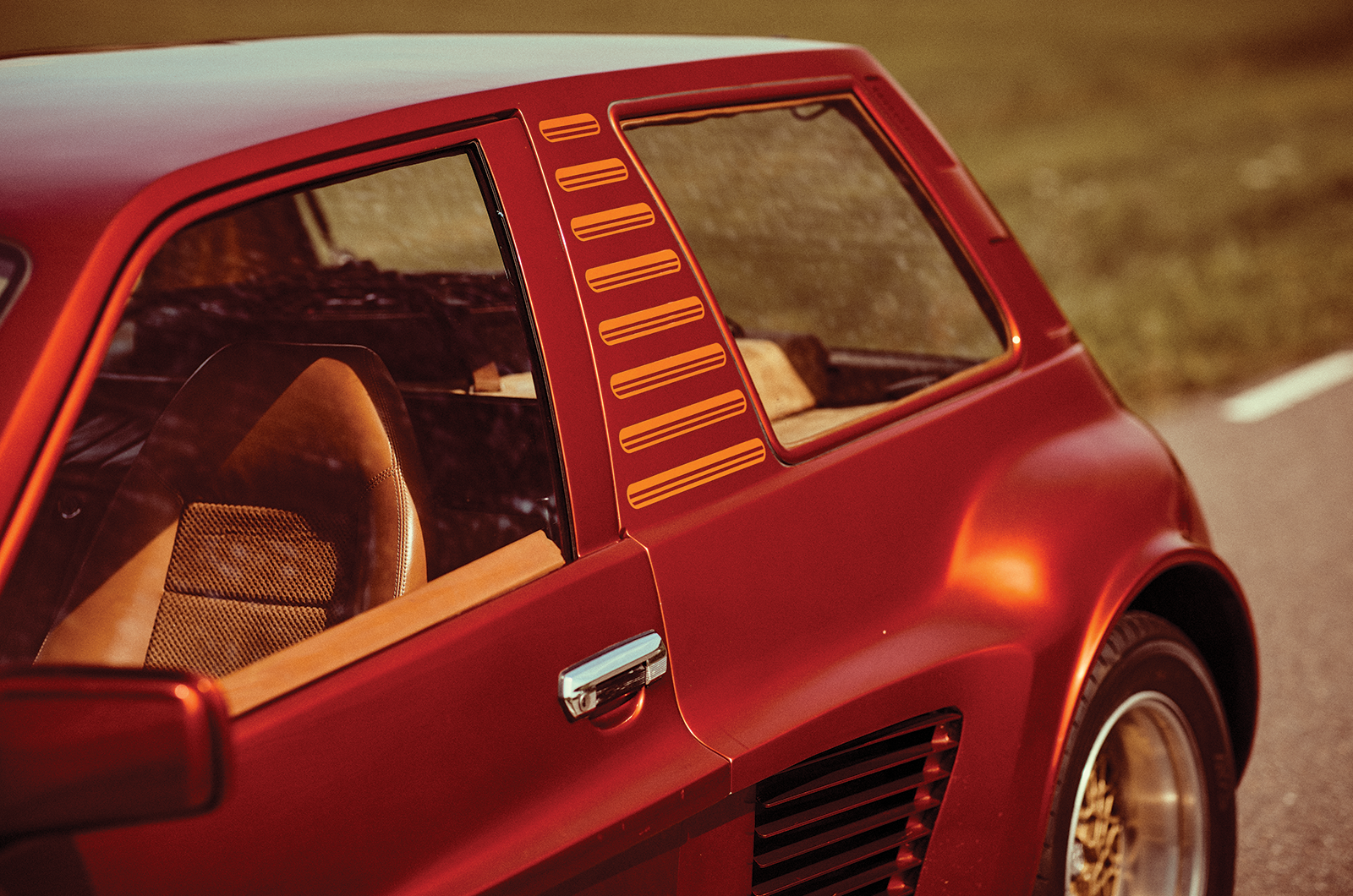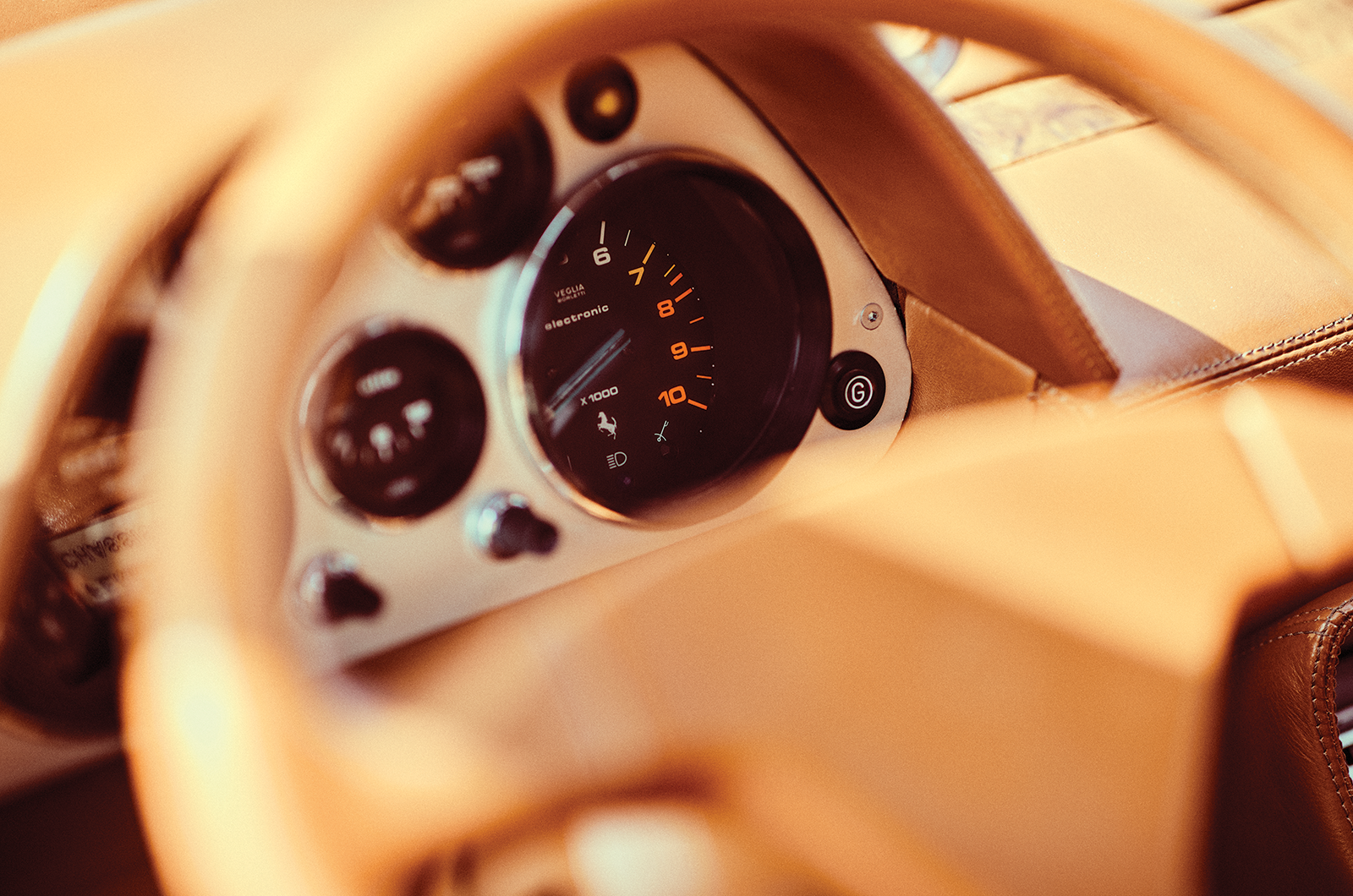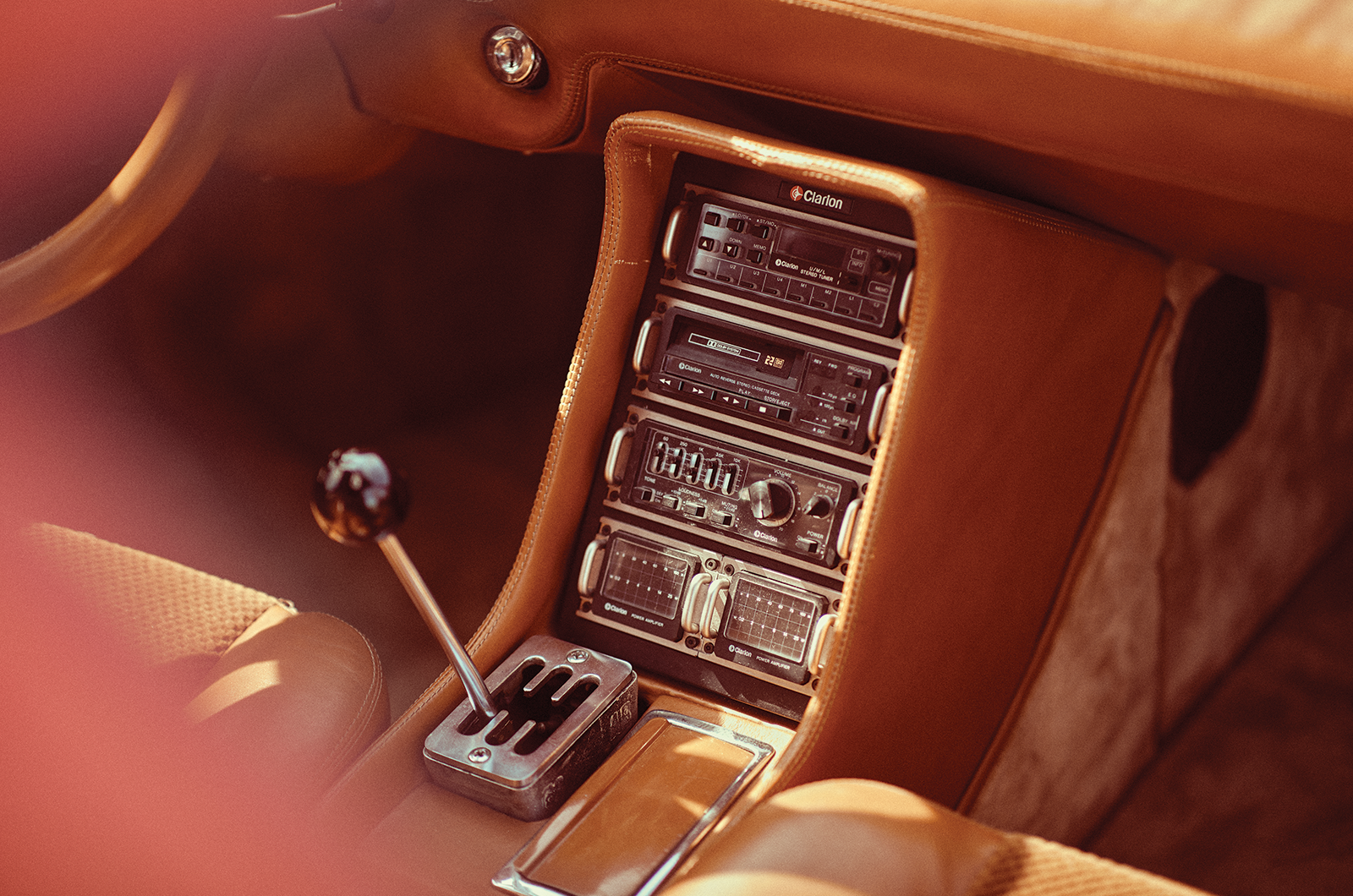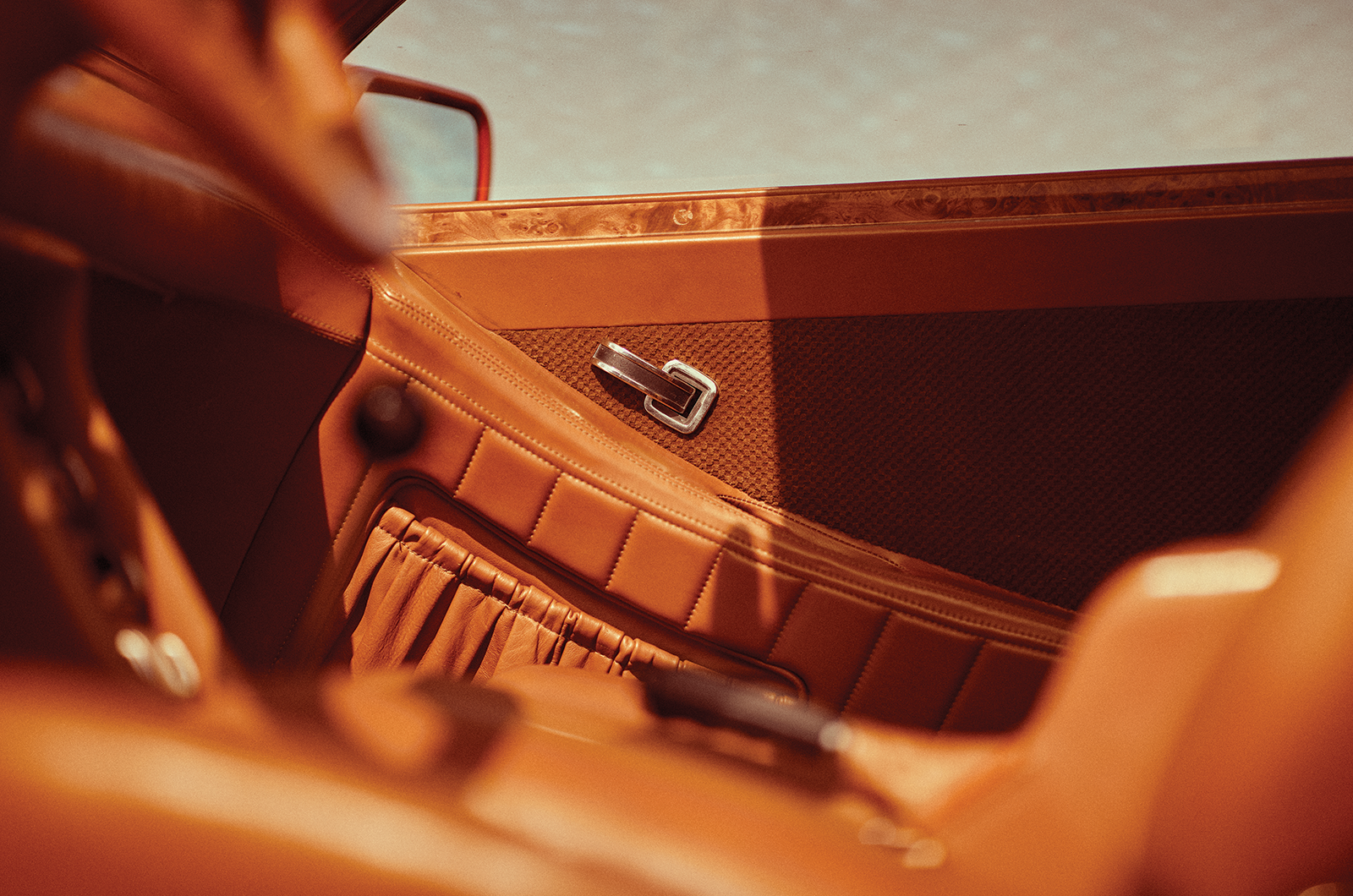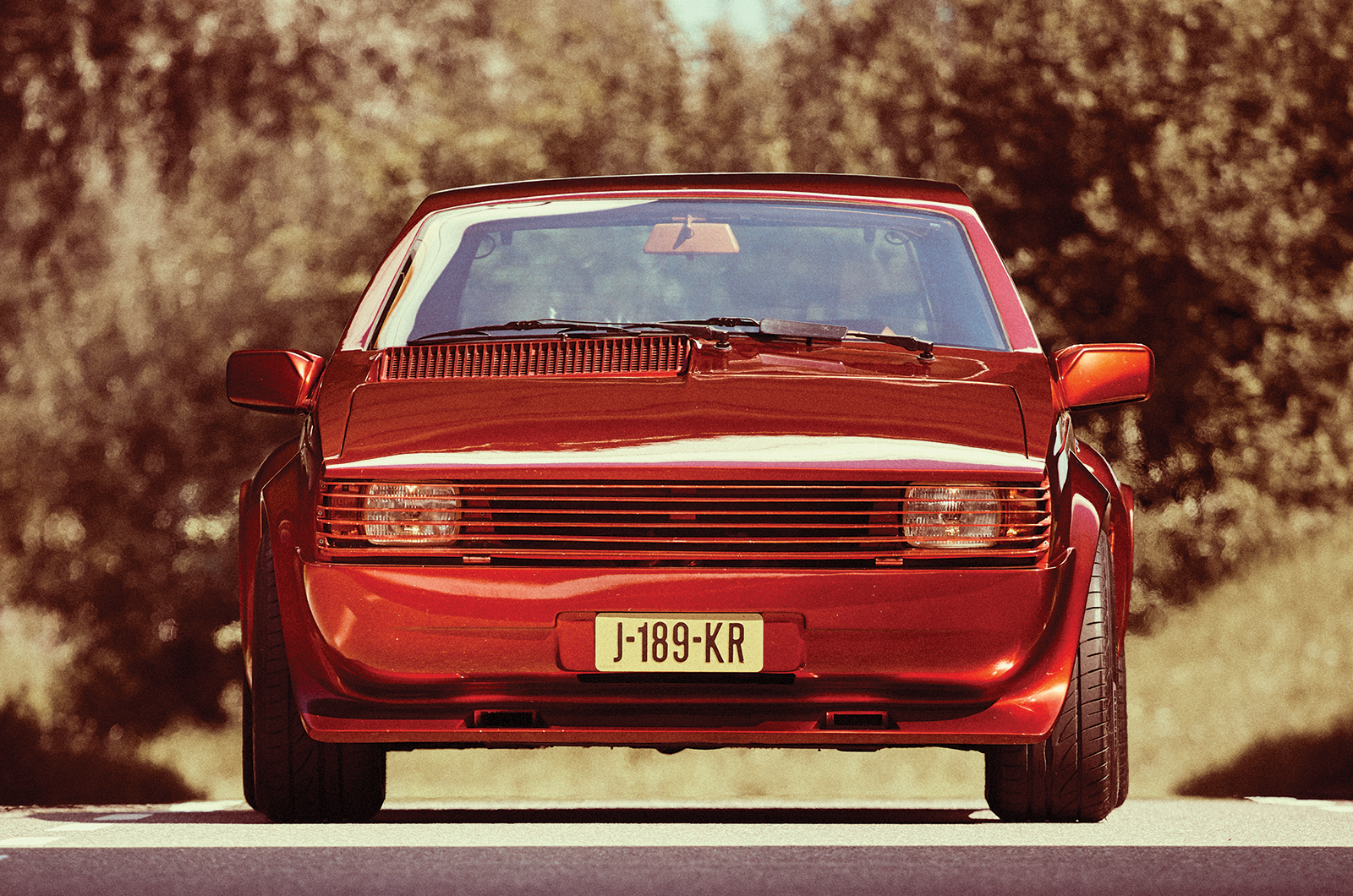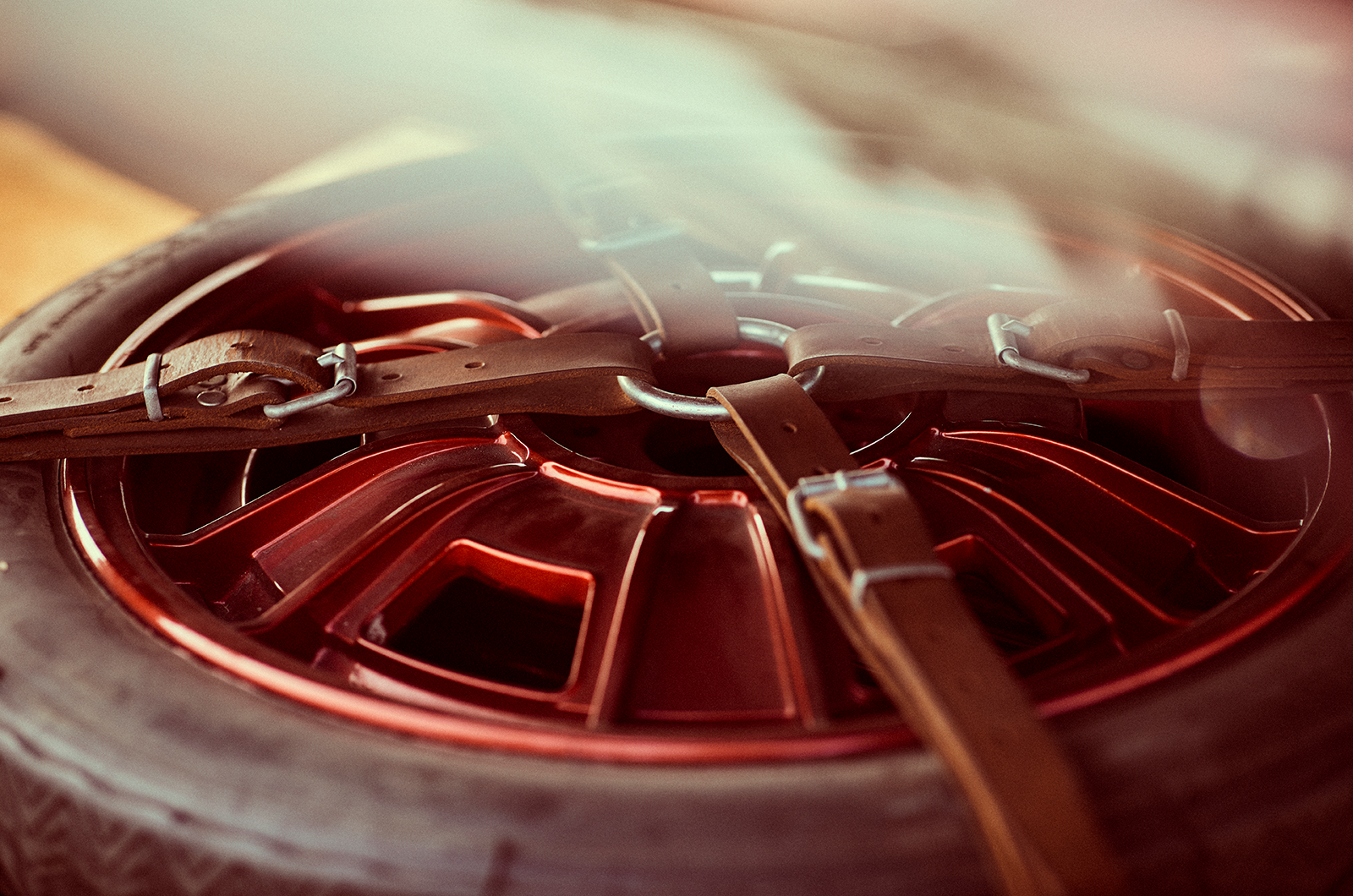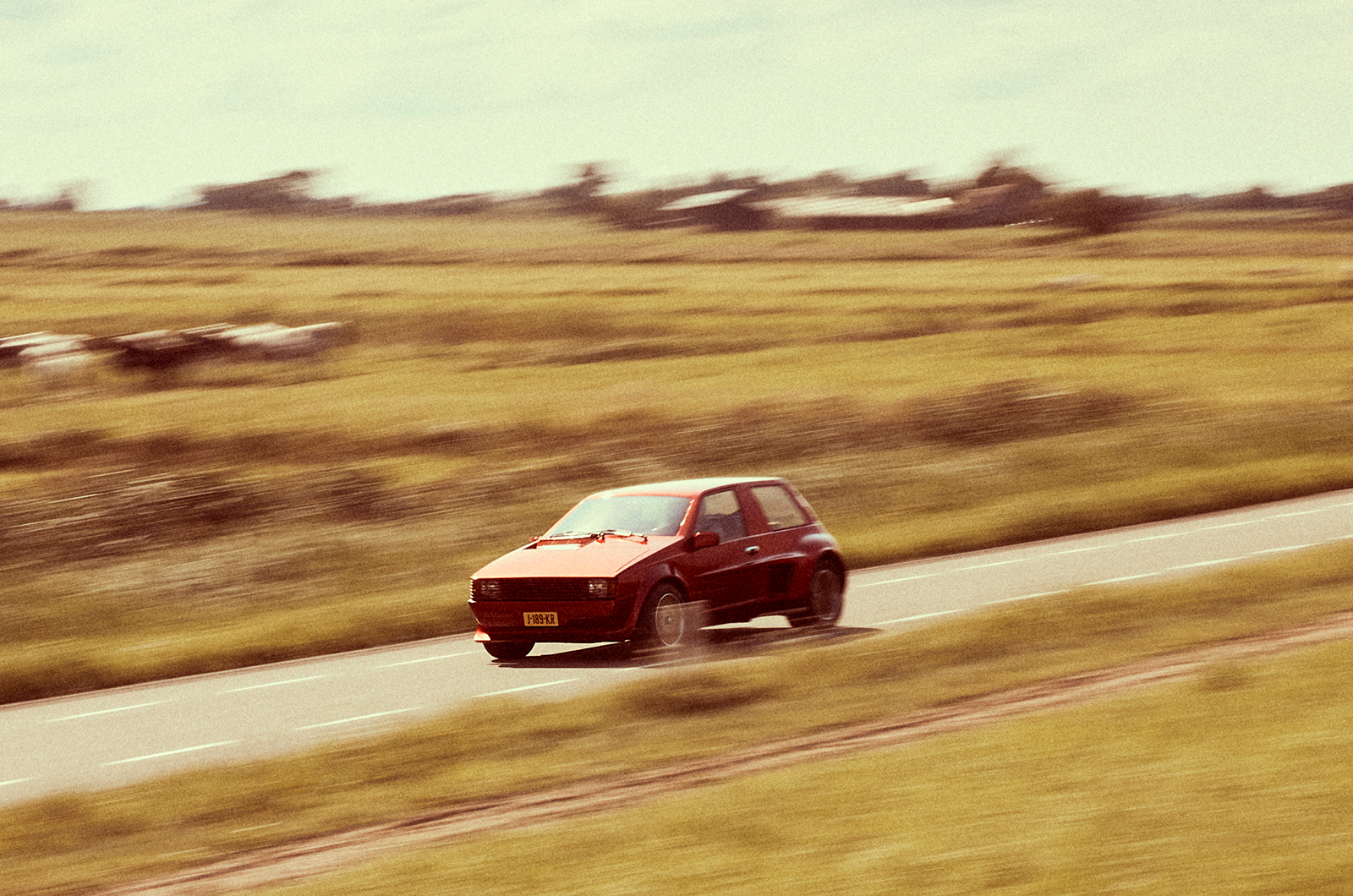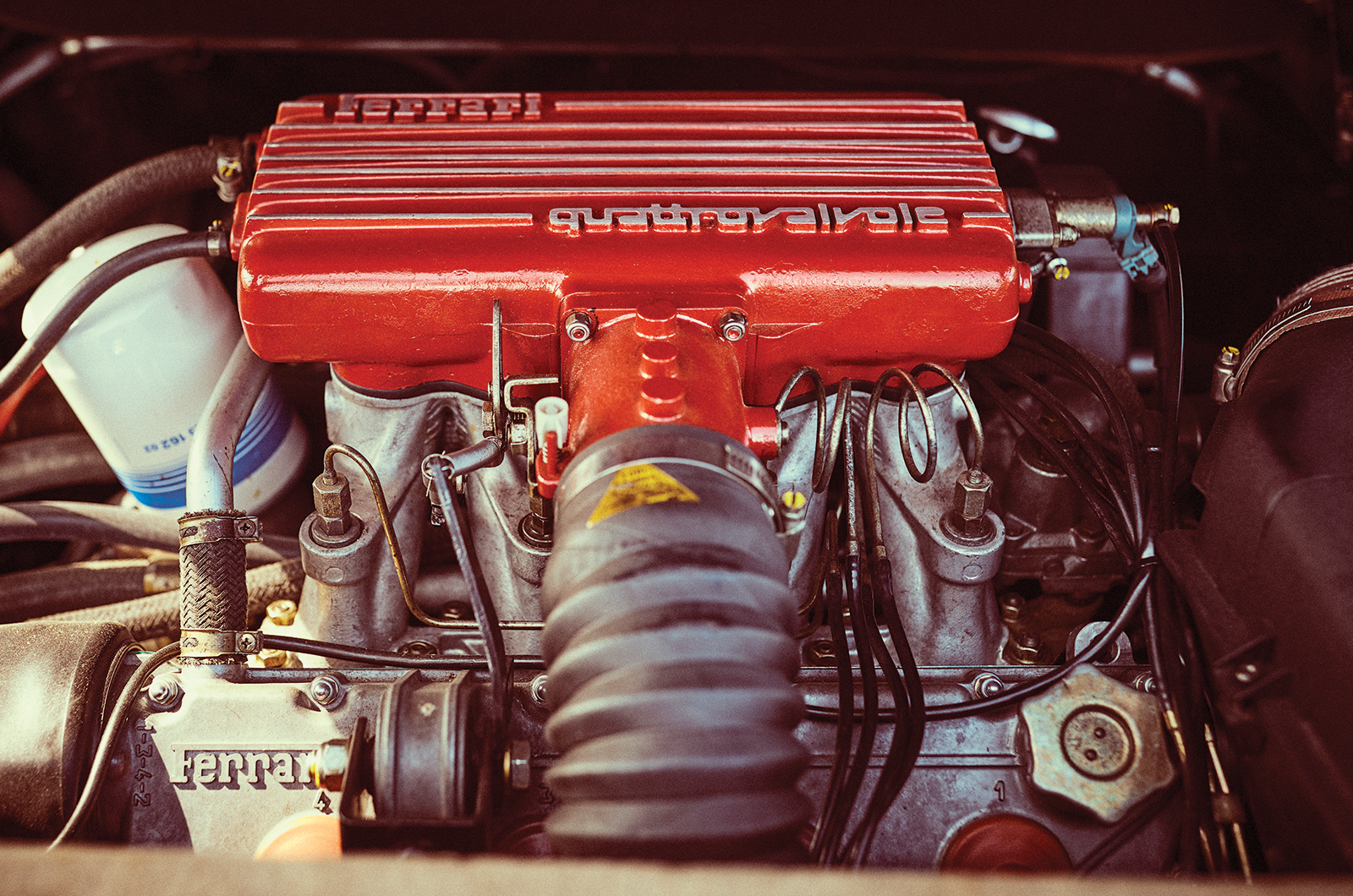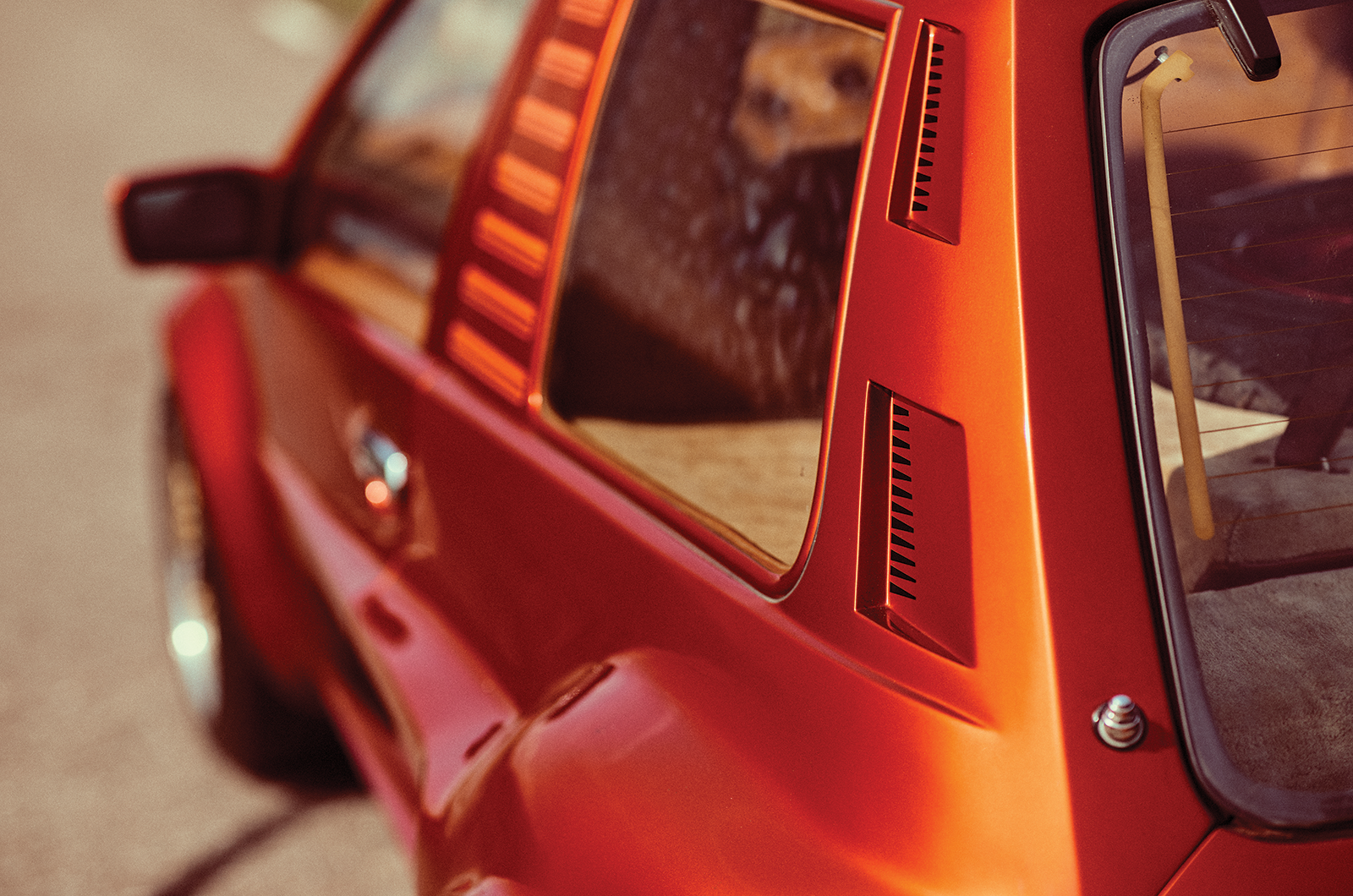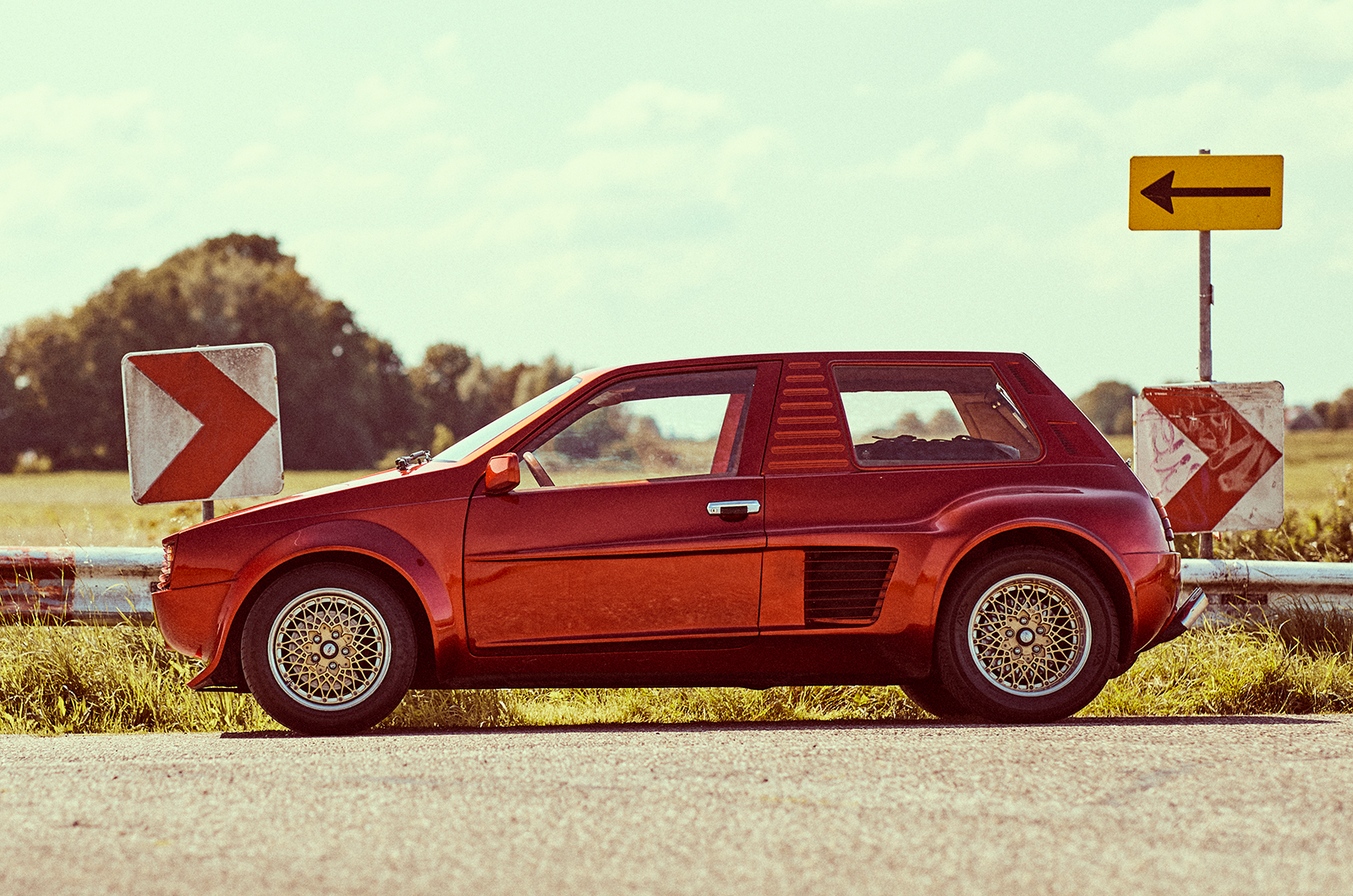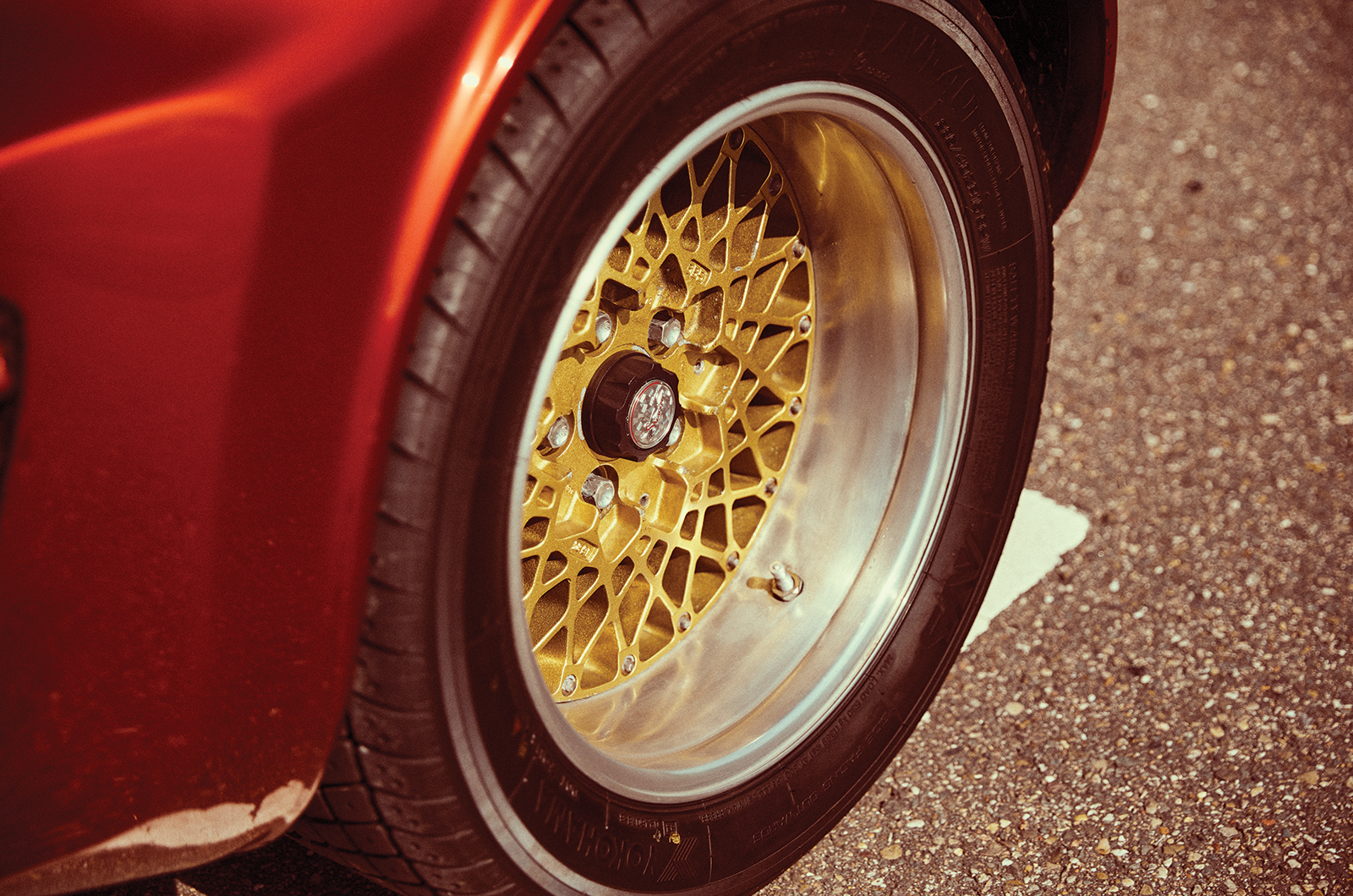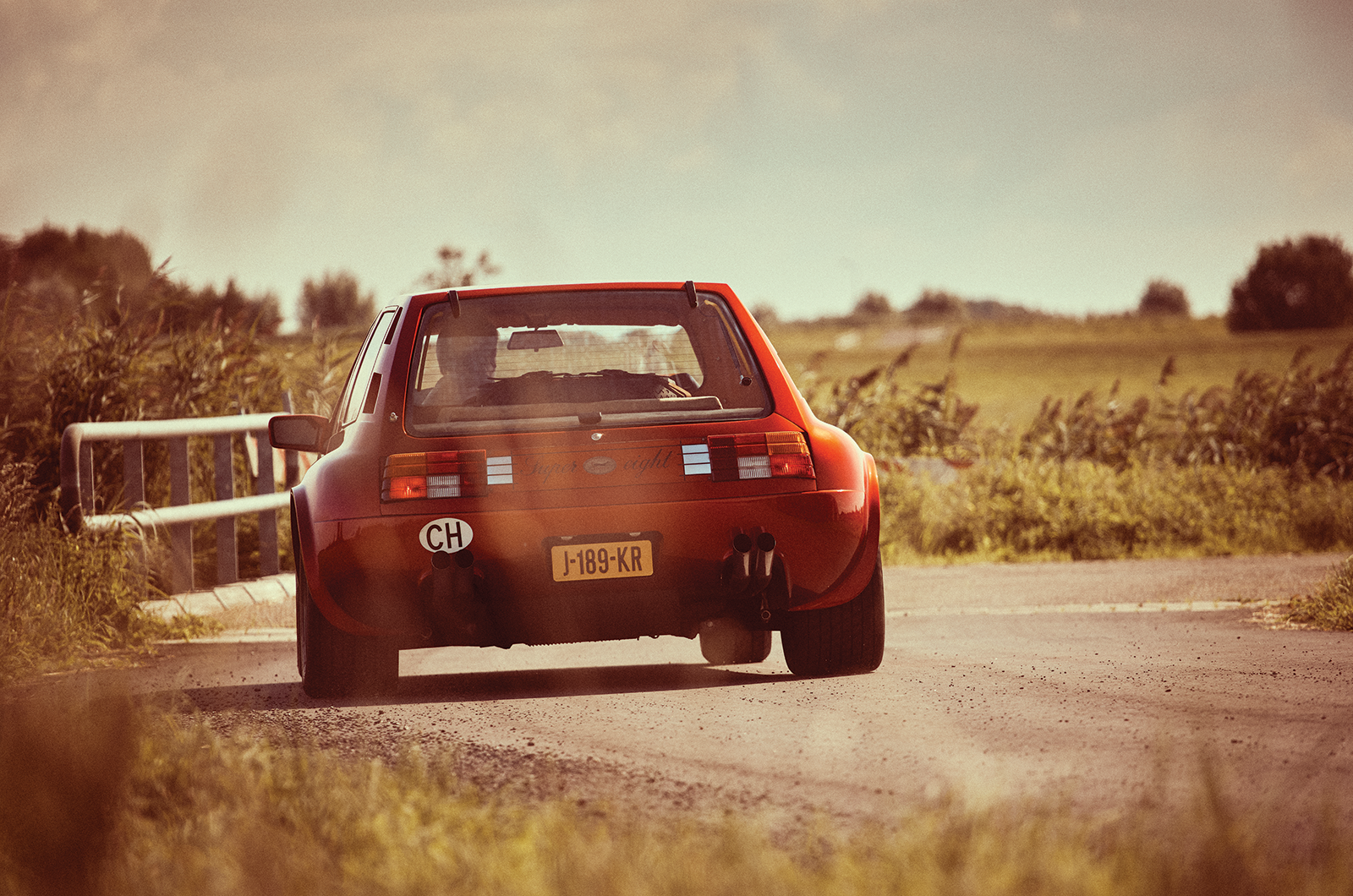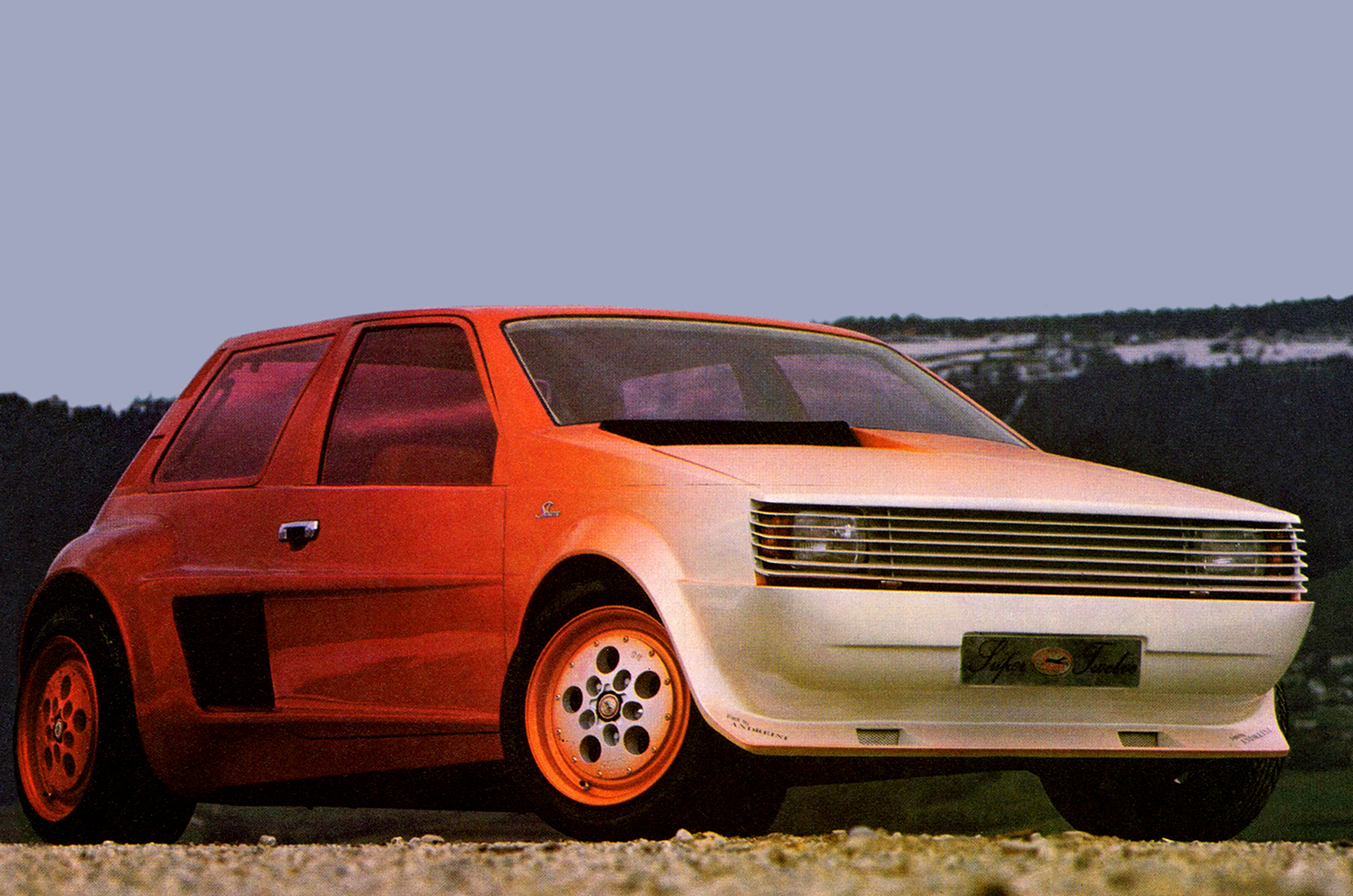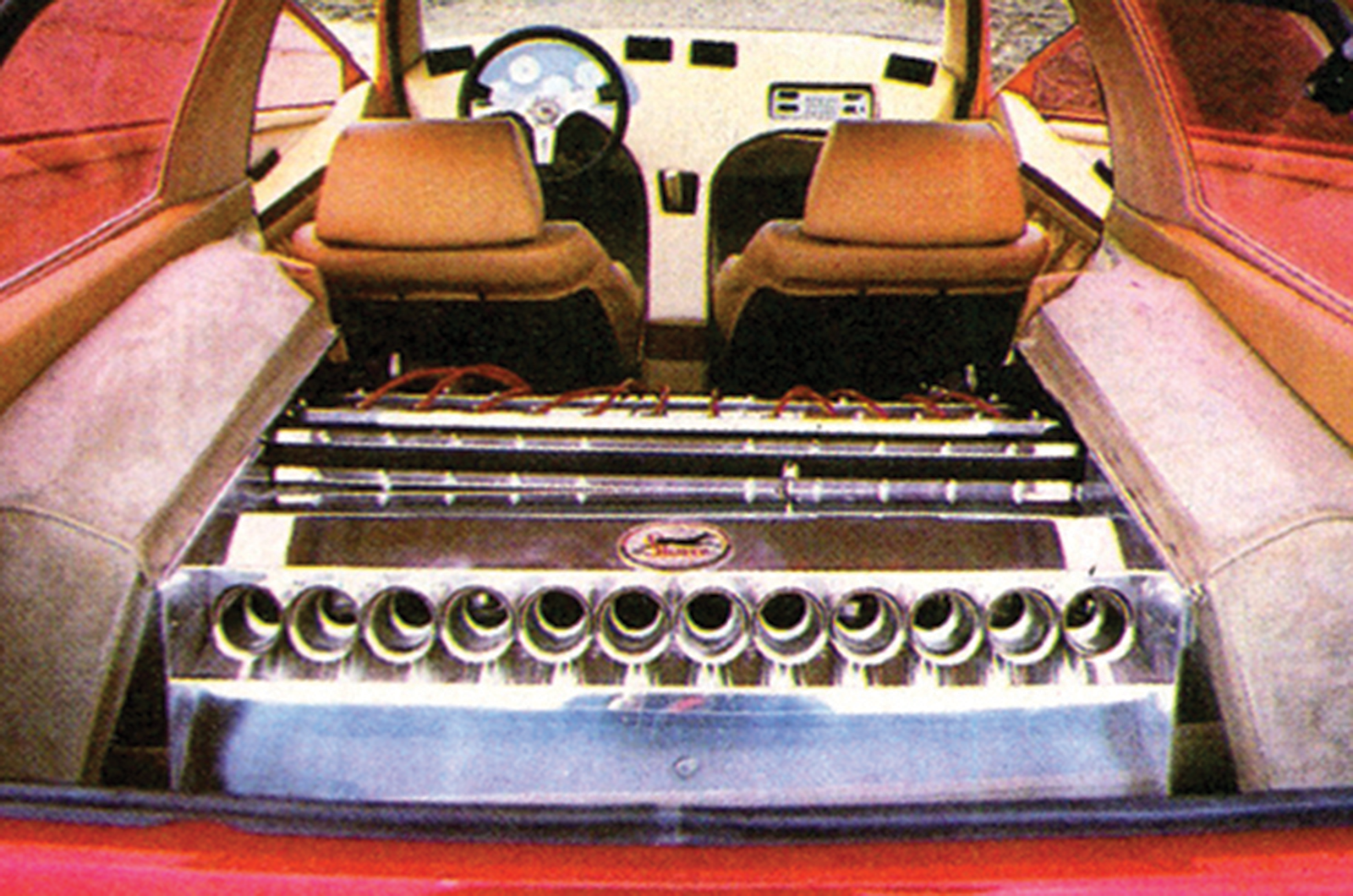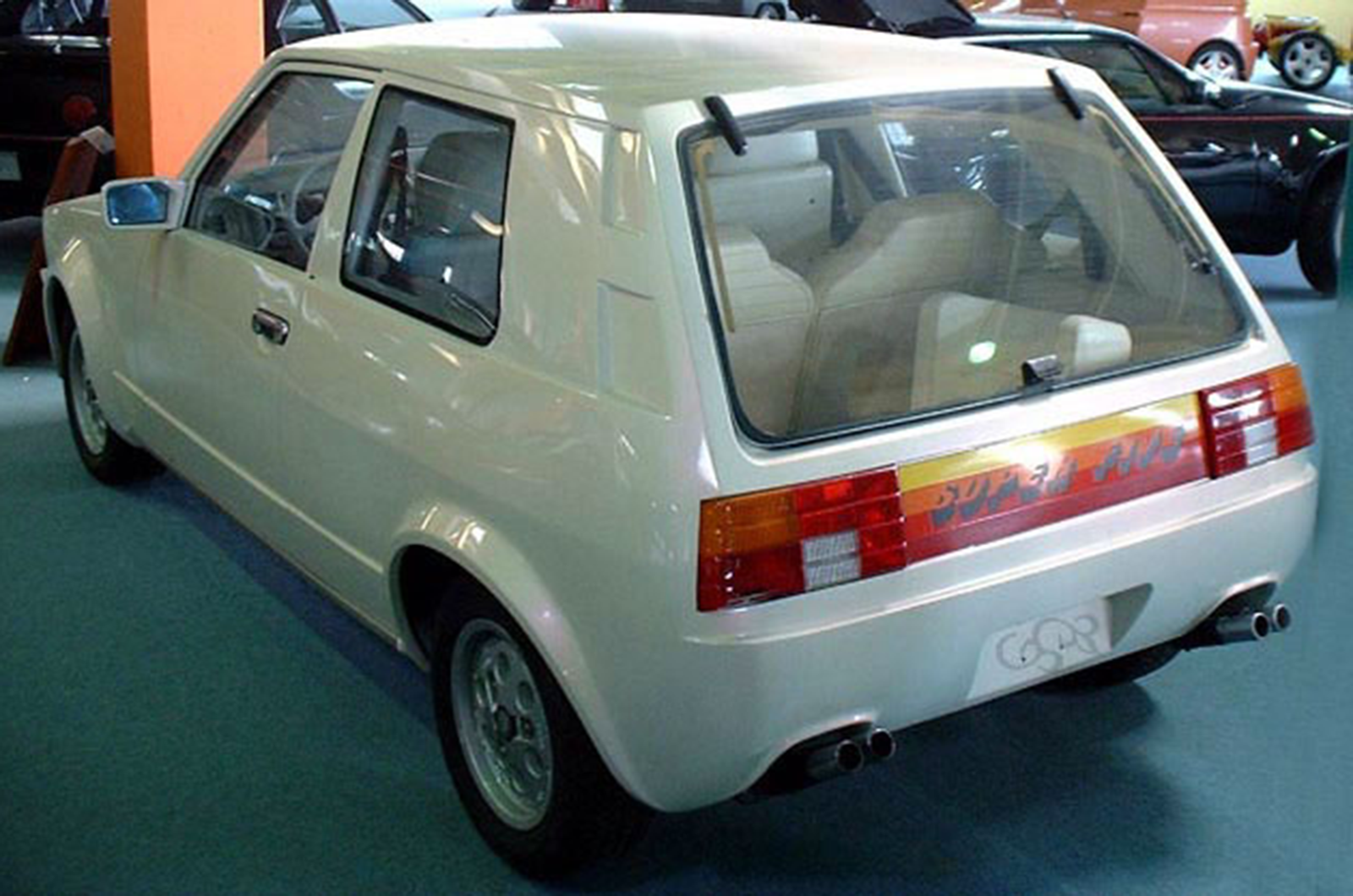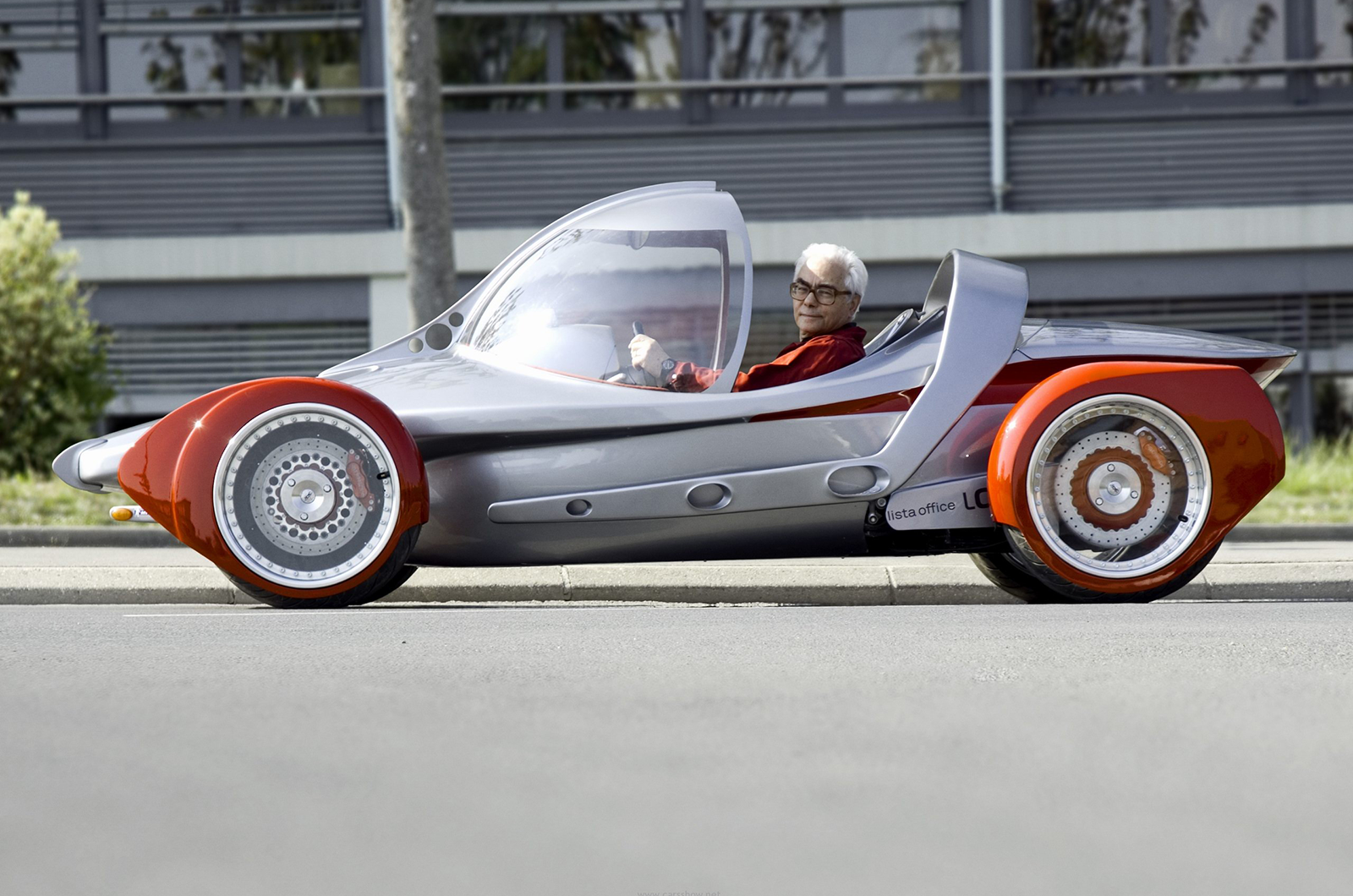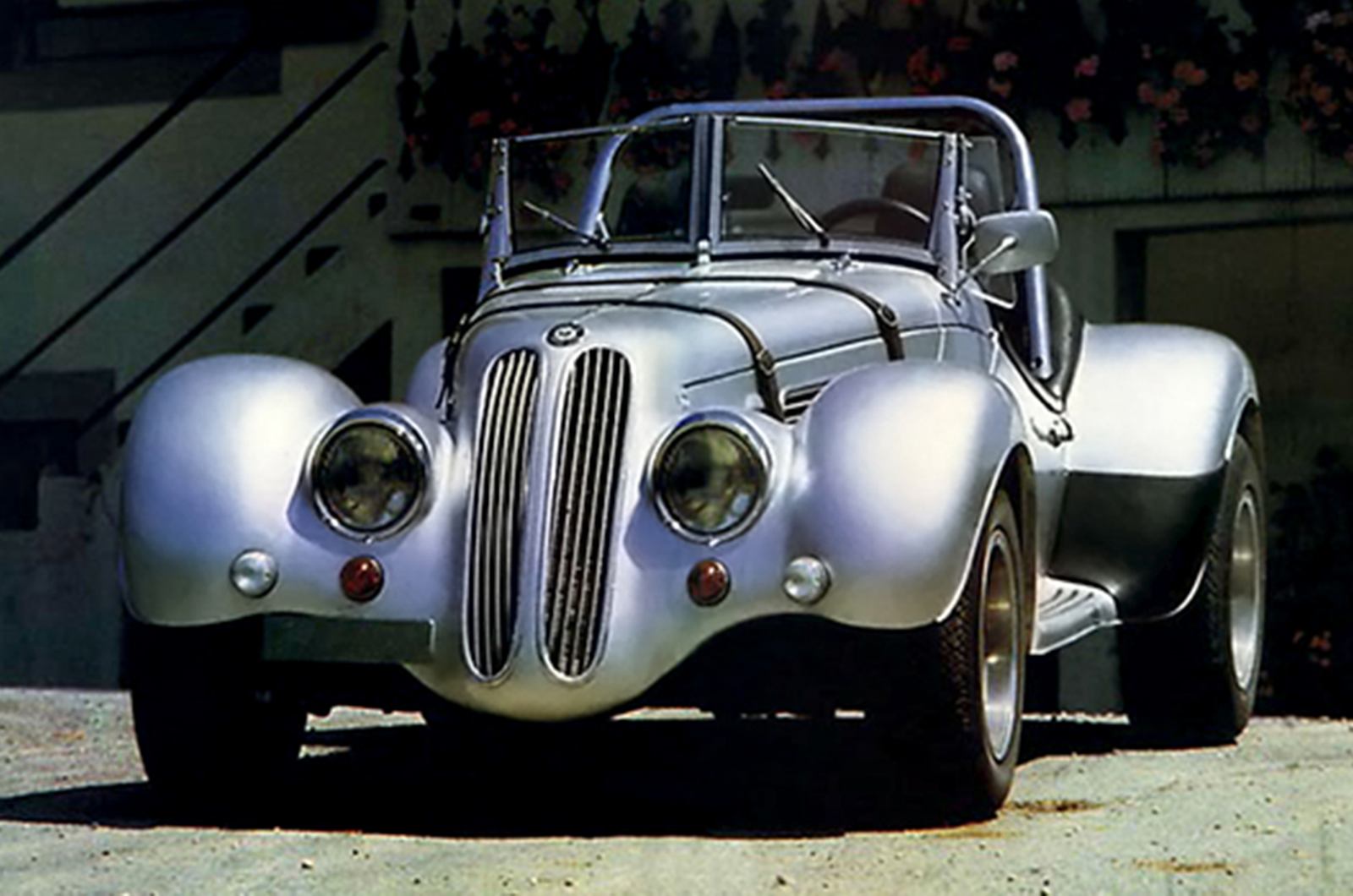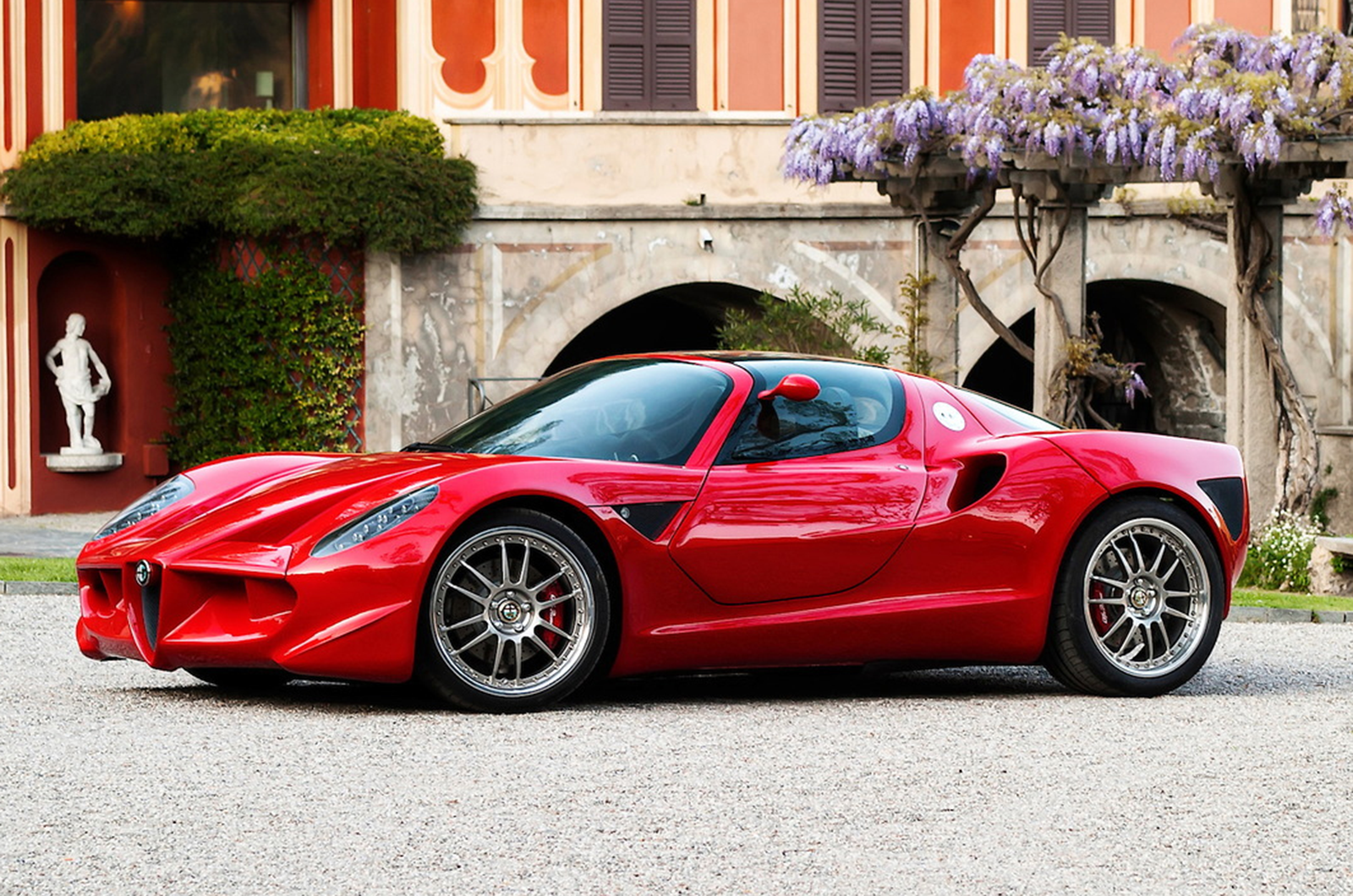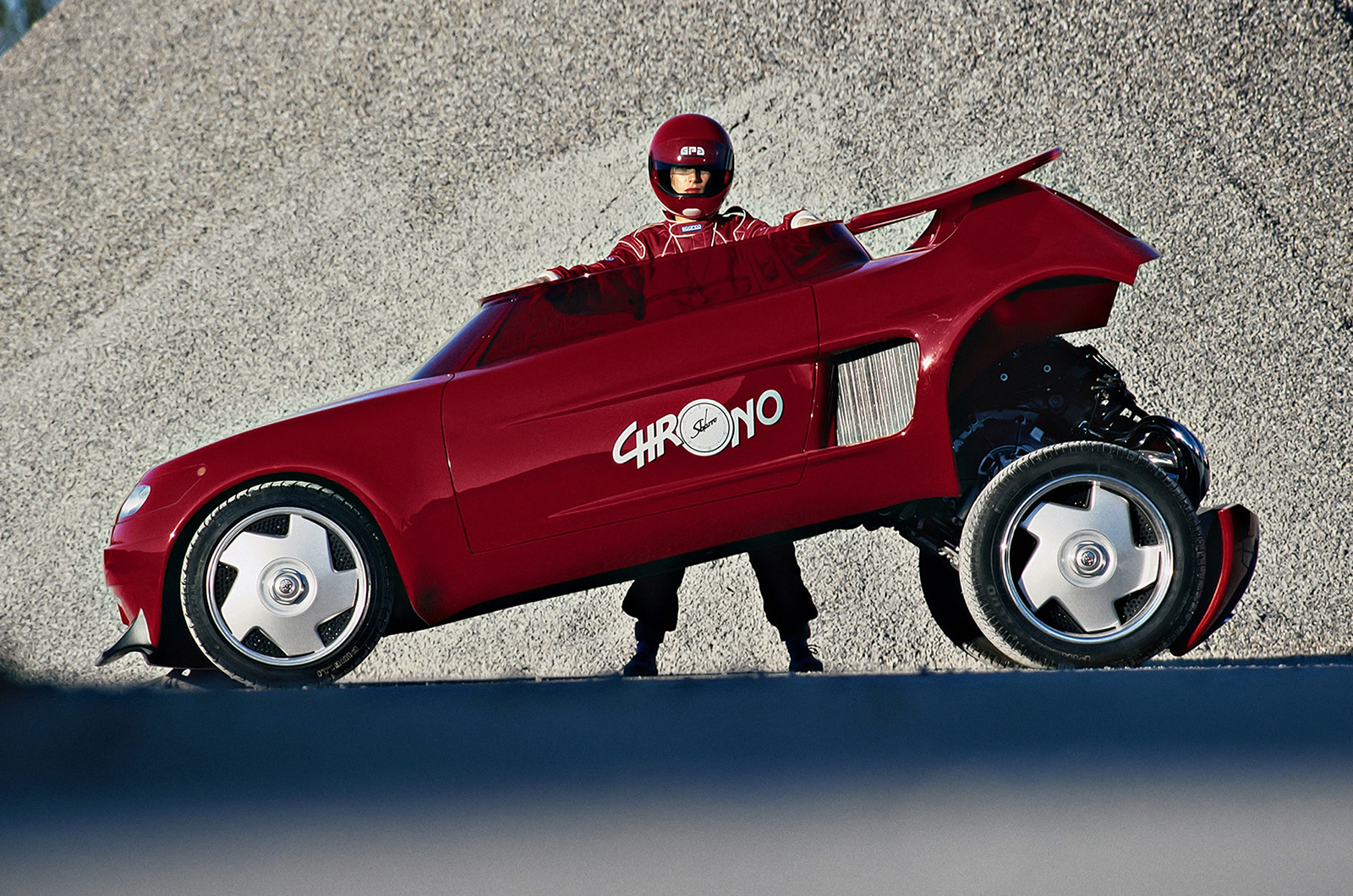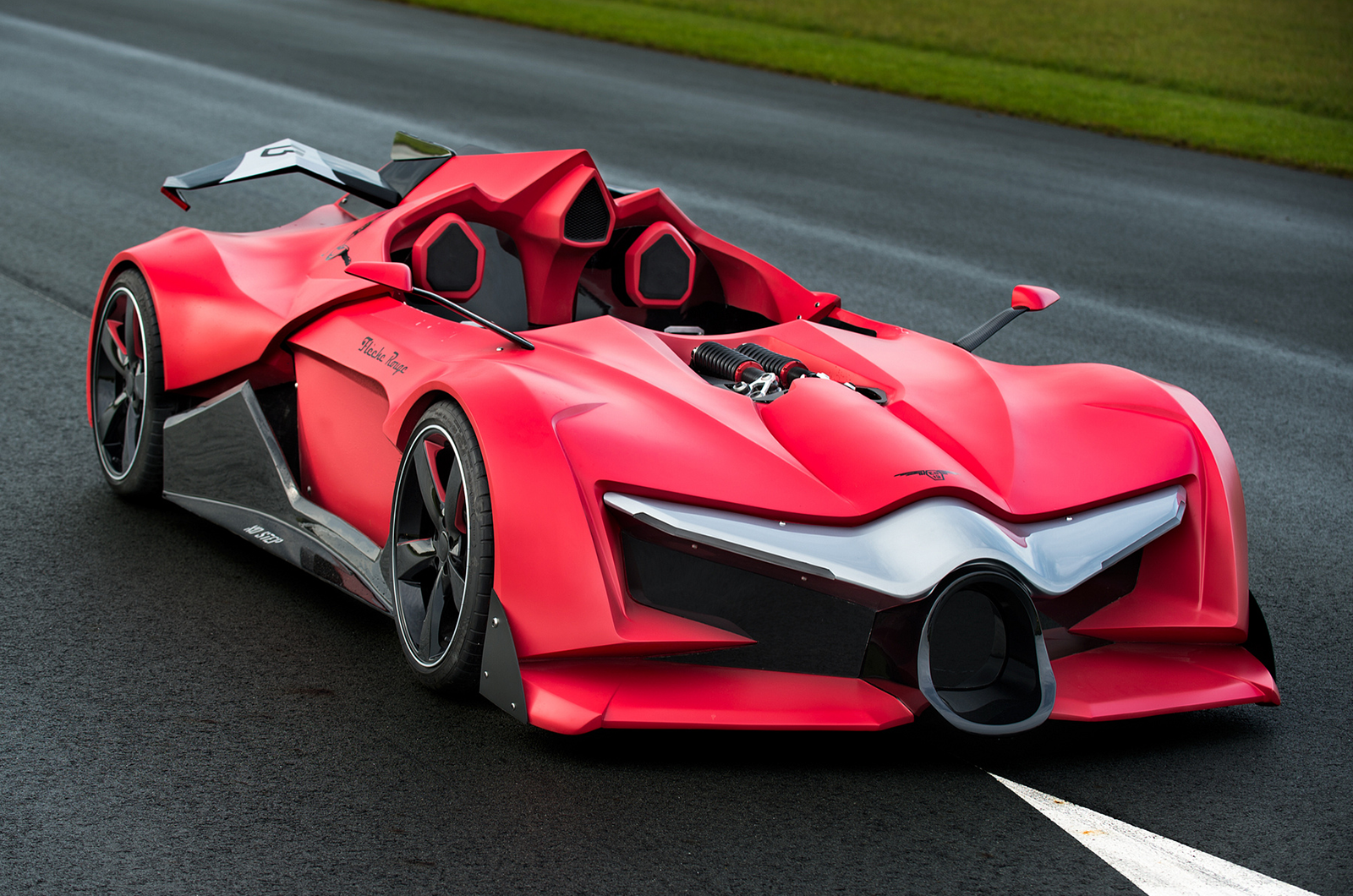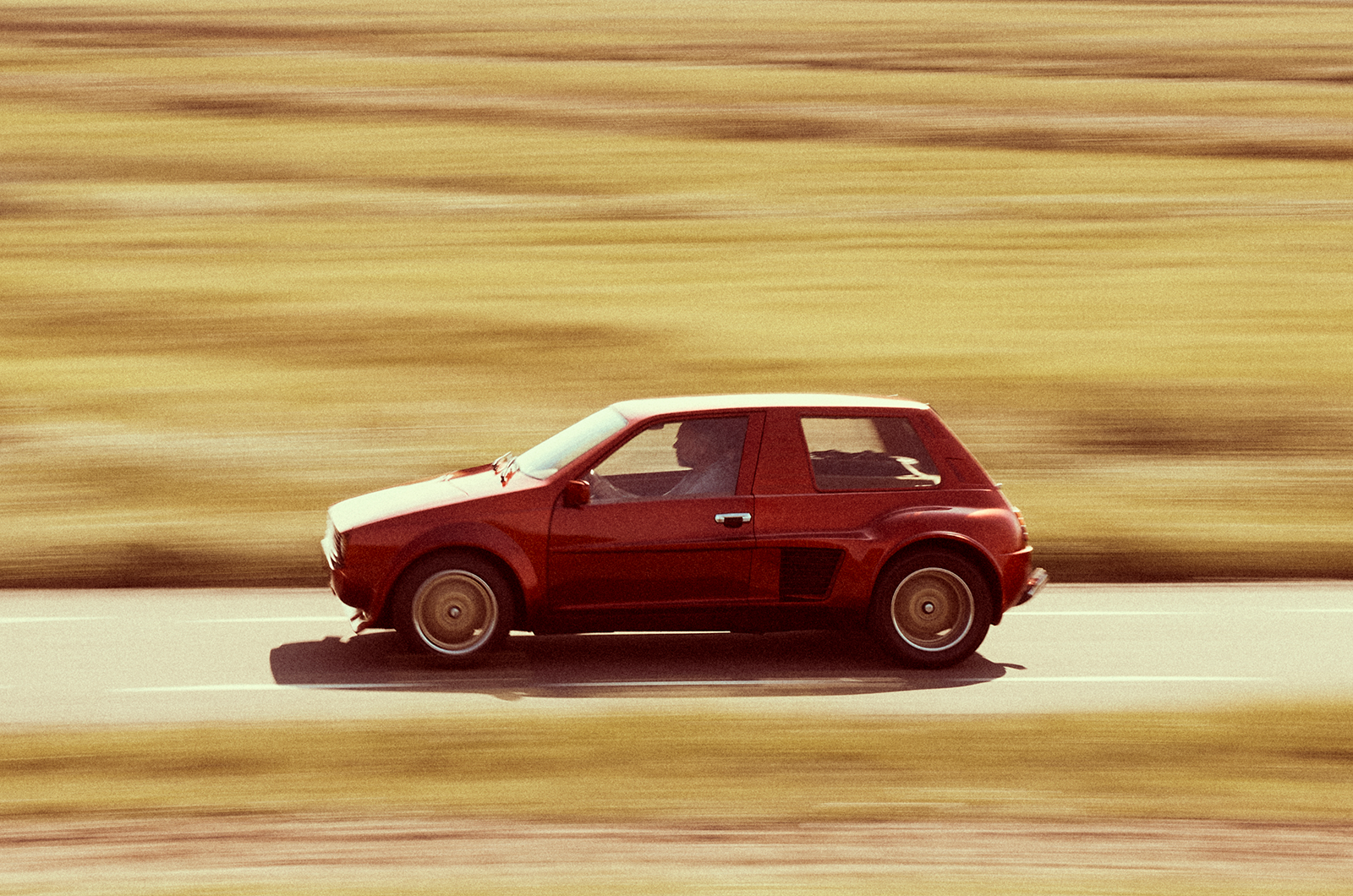That V8 isn’t just there for show. Wring it out and it delivers mighty performance that is much more linear than the Super eight’s crazy looks lead you to expect.
There’s a good shot of Renault 5 Turbo in there, mixed with the Peugeot 205 Maxi and other Group B icons, along with the distinctive flavour of period German tuning houses such as Koenig.
All in all, it’s a delicious cocktail of mind-altering substances from an era when there was no such thing as too much.
Words: Jaco Bijlsma
Images: Jérôme Wassenaar
The Super family
The Super Twelve (left) featured two six-cylinder, 1300cc Kawasaki ’bike engines re-engineered into a transverse straight-12 (right)
The Sbarro Super eight was preceded by the even more extreme Super Twelve (above), in 1982.
The external differences were minimal, but the Twelve is easily recognisable by the remarkable colour gradient in its paintwork.
Mechanically, the Twelve’s name hints at its bespoke, 2.6-litre 12-cylinder engine, mounted transversely behind the front seats and made up of a pair of six-cylinder Kawasaki motorcycle engines.
Sbarro’s Super Five has more modest origins
Each block had its own gearbox driving its own rear wheel and, with around 260bhp to propel 800kg, performance was vivid.
In contrast, the Super Five was more style over substance.
Although it shared a (narrowed) visual similarity with its potent cousins, under the skin it was based on the technology of a more humble Renault 5.
Sbarro’s wildest designs
Clockwise from top: Franco Sbarro in the Two For 100; 2006 Alfa Romeo Diva; 1974 328 America
Born in 1939, Franco Sbarro began his career as a car mechanic, but soon embarked on a stellar rise to become team manager of Scuderia Filipinetti before subsequently striking out on his own as an independent car manufacturer.
Initially, his Atelier de Construction Automobile mainly built replicas of, among others, the Lola T70, BMW 328 and Ford GT40, but soon his own creations began to roll out of the gates.
They started out relatively civilised, with the likes of the Stash coupé, but gradually became more exuberant with one-offs such as the Windhawk, Super eight, Monster G and Challenge.
Sbarro’s mad Chrono from 1990 (left); 2013 ES-13 Flèche Rouge
In addition to his gifts as a designer, Franco is also an inventor credited with creations such as hubless wheels.
He has opened his own travelling design academy, Espace Sbarro, and continues to be a regular exhibitor at the Geneva motor show with more recent successes including the pretty, Tipo 33 Stradale-inspired 2006 Alfa Romeo Diva.
Factfile
Sbarro Super Eight
- Sold/number built 1984/1
- Construction steel tubular chassis, glassfibre body
- Engine all-alloy, dohc-per-bank 2927cc V8, electronic fuel injection
- Max power 237bhp @ 7000rpm
- Max torque 192lb ft @ 5000rpm
- Transmission five-speed manual, RWD
- Suspension independent, by double wishbones, coil springs, telescopic dampers, anti-roll bar f/r
- Steering rack and pinion
- Brakes discs, with servo
- Length 10ft 4in (3150mm)
- Width 5ft 9in (1750mm)
- Height 4ft 3¼in (1300mm)
- Wheelbase 7ft 2½in (2200mm)
- Weight 2712lb (1230kg)
- 0-60mph 5 secs (est)
- Top speed 137mph (est)
- Mpg 18 (est)
- Price new £n/a
- Price now £150,000 (est)*
*Price correct at date of original publication
Enjoy more of the world’s best classic car content every month when you subscribe to C&SC – get our latest deals here
READ MORE
13 wildest one-offs: the cars too crazy to be repeated
24 concepts that nearly made production
Heuliez Intruder: living the high life
